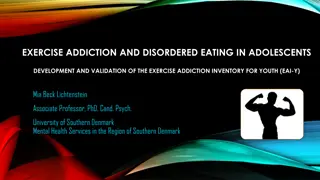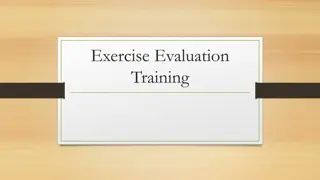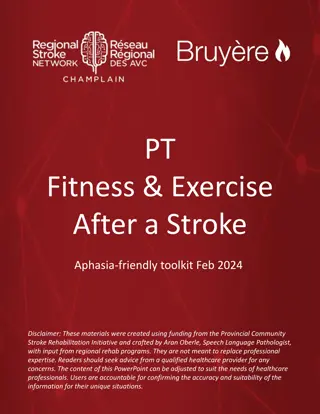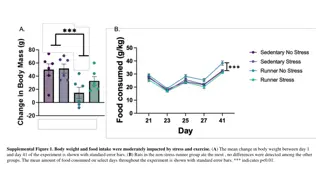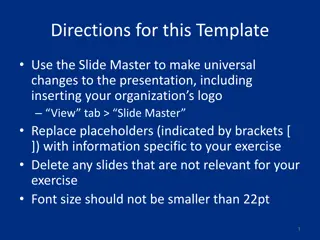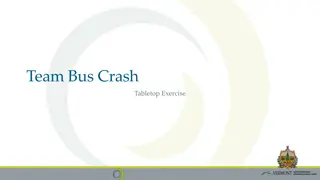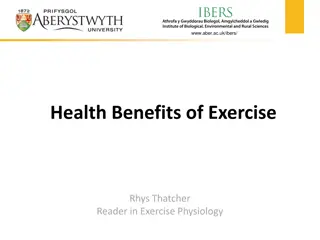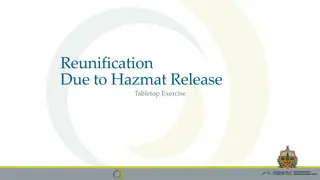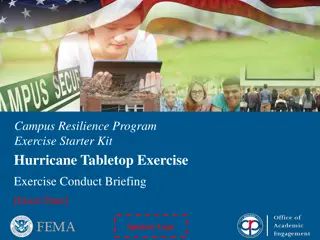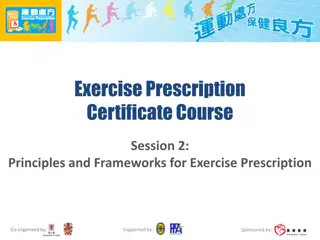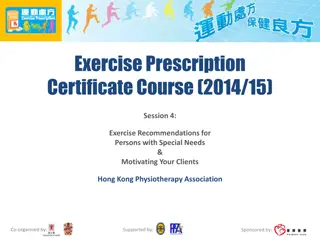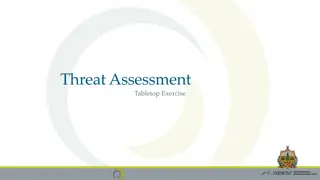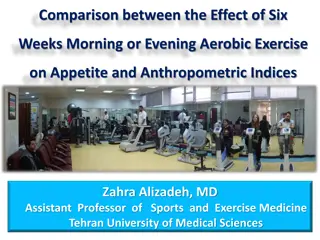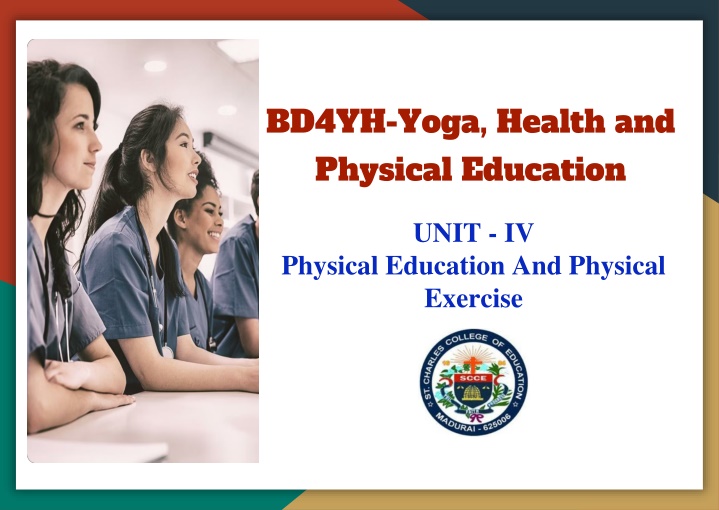
Evolution of Physical Education: Importance, Benefits & Impact
Explore the historical evolution of physical education from ancient civilizations to modern times. Discover the importance of physical education for physical health, mental well-being, social skills, and academic performance. Understand the various benefits of engaging in physical activities, from improving cardiovascular health to enhancing cognitive functions. Embrace the positive impact of physical education on holistic health and well-being.
Download Presentation

Please find below an Image/Link to download the presentation.
The content on the website is provided AS IS for your information and personal use only. It may not be sold, licensed, or shared on other websites without obtaining consent from the author. If you encounter any issues during the download, it is possible that the publisher has removed the file from their server.
You are allowed to download the files provided on this website for personal or commercial use, subject to the condition that they are used lawfully. All files are the property of their respective owners.
The content on the website is provided AS IS for your information and personal use only. It may not be sold, licensed, or shared on other websites without obtaining consent from the author.
E N D
Presentation Transcript
BD4YH-Yoga, Health and Physical Education UNIT - IV Physical Education And Physical Exercise
Introduction to Physical Education Historical Evolution: Physical education has roots in ancient civilizations like China, India, Egypt, and Greece, where it was integrated into daily life and education. 1) During medieval times, physical activities were largely influenced by the military and survival skills. 2) The Renaissance period saw a revival of physical education with an emphasis on physical fitness and sports. 3) In the 19thand 20thcenturies, formal physical education programs were established in schools and the military, promoting structured physical activities. 4) Today, physical education incorporates modern technology, scientific research, and global influences, emphasizing holistic health and well-being. 5)
Importance of Physical Education Physical Health: Regular physical activity improves cardiovascular health, strengthens muscles, and enhances flexibility, contributing to overall physical fitness. 1) Physical education helps in maintaining a healthy weight, reducing the risk of obesity and related diseases. 2) It promotes bone health, reducing the risk of osteoporosis and fractures in later life. 3) Engaging in physical activities can enhance the immune system, making the body more resistant to illnesses. 4) Regular exercise helps in maintaining a healthy metabolism and improves digestion. 5)
Mental Well-being and Physical Education Mental Benefits: Physical activity releases endorphins, which act as natural stress relievers and mood enhancers. 1) It reduces symptoms of depression and anxiety by promoting a sense of well-being and relaxation. 2) Physical education helps improve sleep patterns, leading to better rest and recovery. 3) It enhances cognitive functions, such as memory, attention, and problem- solving skills. 4) Engaging in physical activities can increase self-esteem and confidence, especially in children and adolescents. 5)
Social Skills Through Physical Education Social Interaction: Physical education promotes teamwork and cooperation through group activities and sports. 1) It helps develop communication skills by encouraging interaction among peers. 2) Participation in sports can teach leadership skills and the importance of fair play and sportsmanship. 3) Physical education provides opportunities for students to make new friends and build social networks. 4) It fosters a sense of community and belonging, reducing feelings of isolation and loneliness. 5)
Academic Performance and Physical Education Cognitive Benefits: Regular physical activity has been linked to improved academic performance and better grades. 1) It enhances concentration and focus, allowing students to absorb and retain information more effectively. 2) Physical education can improve behavior and reduce disciplinary issues in schools. 3) It encourages a balanced lifestyle, which supports overall academic success. 4) Integrating physical activities into the school day can lead to increased engagement and motivation in other subjects. 5)
Components of Physical Fitness Cardiovascular Endurance: Cardiovascular endurance is the ability of the heart and lungs to supply oxygen-rich blood to the muscles during sustained physical activity. 1) It is crucial for overall health and can be improved through aerobic exercises like running, swimming, and cycling. 2) Good cardiovascular endurance reduces the risk of heart disease, stroke, and hypertension. 3) It enhances the efficiency of the respiratory system and increases energy levels. 4) Regular aerobic exercise can improve endurance, allowing individuals to perform physical activities for longer periods without fatigue. 5)
Components of Physical Fitness (cont.) Muscular Strength: Muscular strength is the ability of muscles to exert force during an activity. 1) It can be improved through resistance training, such as weightlifting and bodyweight exercises. 2) Increased muscular strength enhances overall body mechanics, reducing the risk of injury. 3) Strong muscles support joints and improve posture, leading to better balance and stability. 4) Muscular strength is essential for performing daily tasks and improves athletic performance. 5)
Components of Physical Fitness (cont.) Muscular Endurance: Muscular endurance is the ability of muscles to perform repetitive contractions over a period. 1) It can be developed through activities like cycling, swimming, and circuit training. 2) Good muscular endurance improves stamina, allowing individuals to sustain physical activity for extended periods. 3) It supports cardiovascular health and enhances the efficiency of the circulatory system. 4) Muscular endurance is important for daily activities and overall functional fitness. 5)
Components of Physical Fitness (cont.) Flexibility: Flexibility is the range of motion around a joint. 1) It can be improved through stretching exercises, yoga, and pilates. 2) Good flexibility reduces the risk of injuries by allowing joints to move freely and efficiently. 3) It enhances athletic performance and helps in performing daily activities with ease. 4) Regular flexibility training can reduce muscle tension and soreness, improving overall physical comfort. 5)
Components of Physical Fitness (cont.) Body Composition: Body composition refers to the proportion of fat and non-fat mass in the body. 1) A healthy body composition is crucial for overall health and can be assessed through various methods like BMI, skin fold measurements, and bioelectrical impedance. 2) Regular physical activity and a balanced diet are essential for maintaining a healthy body composition. 3) Good body composition reduces the risk of chronic diseases like diabetes, heart disease, and certain cancers. 4) It enhances physical appearance and self-esteem, contributing to overall well-being. 5)
Physical Exercise: Types and Benefits Aerobic Exercise: Aerobic exercises include activities like walking, running, swimming, and cycling. 1) They improve cardiovascular endurance, helping the heart and lungs work more efficiently. 2) Regular aerobic exercise can reduce the risk of chronic diseases and improve overall physical fitness. 3) It helps in weight management by burning calories and increasing metabolic rate. 4) Aerobic exercise enhances mood and reduces stress through the release of endorphins. 5)
Physical Exercise: Types and Benefits (cont.) Anaerobic Exercise: Anaerobic exercises involve short bursts of intense activity, such as weightlifting and sprinting. 1) They improve muscular strength and power by challenging the muscles to perform high-intensity work. 2) Anaerobic exercise can increase muscle mass and bone density, reducing the risk of osteoporosis. 3) It enhances athletic performance by building speed, strength, and agility. 4) Regular anaerobic exercise can boost metabolism and aid in weight management. 5)
Physical Exercise: Types and Benefits (cont.) Flexibility Exercises: Flexibility exercises include stretching, yoga, and pilates. 1) They improve the range of motion around joints, reducing the risk of injuries. 2) Flexibility training can alleviate muscle tension and soreness, promoting relaxation and recovery. 3) It enhances posture and balance, contributing to better physical performance. 4) Regular flexibility exercises can reduce the risk of musculoskeletal problems and improve overall mobility. 5)
Physical Exercise: Types and Benefits (cont.) Balance and Coordination Exercises: Balance exercises include activities like tai chi, balance training, and stability ball exercises. 1) They improve stability and coordination, reducing the risk of falls and injuries. 2) Balance training enhances proprioception, or the body's ability to sense its position in space. 3) It supports overall physical performance by improving control and efficiency of movement. 4) Regular balance exercises can enhance athletic performance and functional fitness. 5)
Physical Exercise: Types and Benefits (cont.) Functional Fitness Training: Functional fitness training includes exercises that mimic daily activities, such as squats, lunges, and push-ups. 1) It improves overall strength, endurance, and flexibility, making daily tasks easier to perform. 2) Functional training enhances balance, coordination, and agility, reducing the risk of injuries. 3) It supports overall physical health by promoting efficient movement patterns. 4) Regular functional fitness training can improve quality of life by enhancing physical capabilities. 5)
Holistic Benefits of Physical Education Physical Benefits: Enhances cardiovascular health, muscle strength, and flexibility. 1) Reduces the risk of chronic diseases like diabetes, heart disease, and obesity. 2) Promotes healthy weight management and improves body composition. 3) Enhances physical performance and functional fitness. 4) Supports overall physical health and well-being. 5)
Holistic Benefits of Physical Education (cont.) Mental Benefits: Reduces stress, anxiety, and depression through the release of endorphins. 1) Improves cognitive function, including memory, attention, and problem- solving skills. 2) Enhances adolescents. self-esteem and confidence, especially in children and 3) Promotes better sleep patterns, leading to improved rest and recovery. 4) Supports overall mental health and well-being. 5)
Holistic Benefits of Physical Education (cont.) Social Benefits: Encourages teamwork, communication, and leadership through group activities and sports. 1) Fosters a sense of community and belonging, reducing feelings of isolation and loneliness. 2) Provides opportunities for social interaction and the development of social skills. 3) Promotes inclusivity and diversity, allowing individuals of all backgrounds to participate. 4) Enhances overall social well-being and quality of life. 5)
Holistic Benefits of Physical Education (cont.) Academic Benefits: Improves academic performance and cognitive function through regular physical activity. 1) Enhances concentration and focus, allowing students to absorb and retain information more effectively. 2) Reduces behavioral issues and promotes a positive learning environment. 3) Encourages a balanced lifestyle, supporting overall academic success. 4) Integrates curriculum, promoting holistic development. physical education into the comprehensive educational 5)
Conclusion Summary of Key Points: Physical education has a rich history and has evolved to include modern practices and technology. 1) It plays a crucial role in physical, mental, and social well-being. 2) Understanding the components of physical fitness and the types of exercises can help in developing effective physical education programs. 3) The holistic benefits of physical education extend beyond physical health to include mental, social, and academic benefits. 4) Promoting physical education is essential for overall development and well- being. 5)


